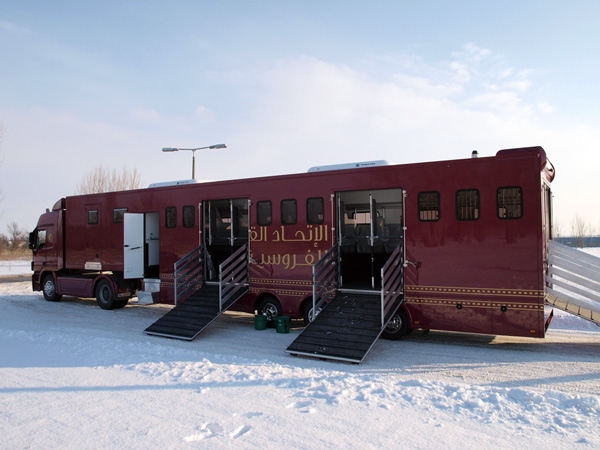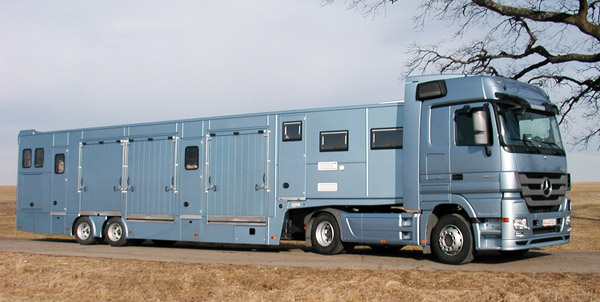(and a few other important details)
Driving
licence rules are very simple but there several little things that are handy to
know.
In the
UK, years ago, you could pass your test in an Austin Metro or Vauxhall Nova in
the morning and then take your horses to a show using lorry and a trailer in
the afternoon. The rules changed in February
1997, and the UK – along with other EU countries – introduced new categories of
driving licence:
B – a car
licence, you can drive a car or van up to 3.5 tonnes (e.g. a transit van)
C1 – a licence
to drive large van/small lorry up to 7.5 tonnes
C – a licence to drive vehicles we describe as "rigid HGV", things bigger than 3.5t and beyond 7.5t
If you
passed your test before February 1997, you automatically got the B and C1
entitlement under grandfather rights. Some of the older terms are still used. For example, a Class 1 HGV is the old term for driving an articulated lorry; now you need a C+E licence.
Any of
these rigid licences will allow you to tow a trailer that has a MAM (Maximum
Authorised Mass) or up to 750kg.
Horsebox trailers tend to have a MAM of between 1500kg and 3000kg.
Is it true that you can tow bigger trailers on a car
licence without taking a trailer test?
The B
category licence (ordinary car licence) will allow you to two bigger trailers,
so long as two rules are met:
1)
That when you add the MAM of your car and the
MAM of your trailer together, the total is no more than 3500kg.
2)
That the MAM of your trailer is
not more than the unladen or kerb mass of your car.
For
example, some compact 4x4s (such as a Toyota RAV 4) will have a MAM of around
2000kg and an unladen mass of 1500kg.
This will allow you to tow a trailer of up to 1500kg.
1)
MAM of car + MAM of trailer = 2000+1500
= 3500kg RULE 1 OK
2)
Unladen mass of car =
1500kg. The trailers MAM isn’t bigger
than this so RULE 2 OK
 |
| Smaller car-trailer combinations may not need a trailer licence |
Realistically,
this sort of setup will only be suitable to those carrying a horse no bigger
than 15hh, using lightweight single horse trailer. If you have a lightweight trailer, you can
ask the manufacturer to downrate the MAM of the trailer so you can be legal,
but you must ensure that you don’t overload the trailer to take it over the
lower MAM.
Also,
ensure that your car is capable of towing your trailer, as you are not allowed
to tow a trailer that is heavier than what the car manufacturer has stipulated (usually by giving a gross train weight - the weight of your car and trailer together; others give a specific trailer weight.
Taking a C1 Test
There
are many firms offering training courses for C1 driving licences and are popular amongst horsebox owners and ambulance drivers.
A C1
licence will permit you to drive a van or small lorry up to 7500kg (7.5 tonne). You can also tow a trailer that has a MAM of
750kg or less.
 |
C1 licence training and tests are often done in larger
vans of about 5 tonnes with car-like controls |
To get a
C1 licence is almost as complex as getting a fully-blown "rigid HGV" or C category
licence: you still have to have a medical, pass a lorry drivers’ theory test
and then complete an extended practical driving test. Some people therefore prefer to train full
"rigid HGV" (C category) licence, rather than the C1.
However,
a C1 driving test can be passed in a large van, such as an up-rated Ford
Transit, Iveco Daily or Mercedes Sprinter.
These have similar driving set-ups to cars, such as having five or six
speed gearboxes, simple braking systems, and so on. A "HGV" will have two ranges of gears, retarder
braking systems, air brakes, etc. Vans
are also a bit smaller.
Because
of these differences, it is cheaper (and usually easier) to train and pass in the
C1 category.
Trailer licences
When you
pass either a B or a C1/C category licence, you are automatically given a
provisional licence for your respective trailer licence (i.e. B+E or
C1+E).
You don't have to take a medical or a theory test if you're adding trailer entitlement (unless your adding full trailer entitlement to a restricted C1+E obtained through grandfather rights - see below). The practical test is extended, and includes reversing manoeuvres.
Passing a B+E licence allows you to tow any trailer that doesn't have a mass bigger than 3500kg. (It used to be "any trailer" - so some engineers were making mini-articulated lorries using vans as tractor units, but the Department for Transport have closed that loophole.)
If you already
have a B+E licence, you aren't automatically allowed to tow with your C1 or C test; you have to take a further towing test for this category. However, if you do
pass a C1+E or C+E trailer test, then trailer entitlement will be added to your
car licence (so you get B+E too) if you don't have it already.
 |
A C1 licence allows you drive a 7.5t lorry with a
trailer with a MAM of no more than 750kg. This combination
would need a tachograph as it is over 7.5t |
A C1+E licence allows you to tow any size trailer, so long as the combined MAM (the tow vehicle MAM plus trailer's physical weight at the time is no more than 12000kg (12 tonnes).
If you
passed your licence before 1997, you have a C1+E entitlement, but with a restriction. You can tow a trailer
behind a vehicle, but the combination MAM (the tow vehicle MAM plus trailer MAM)
must not be bigger than 8250 and the
MAM of the trailer must not be more than the unladen mass of the towing
vehicle. You can remove this restriction by taking the C1+E test, but you'll need to pass a medical and do the lorry theory first.
If
your lorry and trailer combination are over 7500kg (7.5t) you will need a
tachograph and observe driver hour’s rules, even if it is for private use.
Supervising a learner driver
A rule brought in recently now means that you can only supervise a learner driver if you've passed the test in that specific category. So if you have C1 or C1+E entitlement thorough grandfather rights, you'll have to pass the tests yourself before you can teach others.
Trailer MAMs and the Law
I called
the DVLA to check the rules. They were insistent
that your trailer’s rated MAM, rather than what is physically weighing on the
day, is what matters when you are considering your driving licence.
For
example, if you have a 1000kg MAM trailer that weighs 600kg when you load it
up, you could be prosecuted for driving without a valid licence, even though it
physically weighs less than your 750kg entitlement.
The good
news is that most manufacturers will provide a replacement plate with a lower
MAM, so long as the trailer and its components are capable of going down that
low.
VOSA, on
the other hand, will regard what it physically weighs, rather than the MAM
(assuming your trailer isn’t overloaded anyway!) if it checks your trailer
against the towing ability of your car.
 |
| Manufacturer's plates |
For example,
if you have a car that is rated to 1500kg by its manufacturer, you are perfectly
OK to tow a trailer that has a MAM of 2000kg, so long as it is never loaded
above 1500kg (and you have the appropriate licence, of course).
The MAM
of the trailer can be found on the manufacturer’s plate (which all trailers
have been legally required to have since 1983) and this is found on the A
frame, close to the towing hitch.
DISCLAIMER - I'm not a lawyer, nor a government official. Check with these if you want definitive answers; this is as much as I think I know.
 Turntable horsebox trailers have been relatively popular in parts of Europe, especially as they can carry horses carriages and living accommodation, not a combination which is easily balanced on a centre axle trailer.
Turntable horsebox trailers have been relatively popular in parts of Europe, especially as they can carry horses carriages and living accommodation, not a combination which is easily balanced on a centre axle trailer.

 So hopefully, we will see a resurgence in this very practical and little known design of trailer.
So hopefully, we will see a resurgence in this very practical and little known design of trailer.



































